In Kamakura sightseeing, where will you all go? You might ride the Enoshima Electric Railway Line, stroll and taste various foods along Komachi Street, but don’t forget Tsurugaoka Hachimangu, right!?
This time, as I walked from northern Kamakura to Kamakura itself, I also stopped by Tsurugaoka Hachimangu, so I’d like to introduce it to you with a historical perspective.

What is Tsurugaoka Hachimangu?
In 1063, Minamoto no Yoriyoshi enshrined the Isehama Hachimangu in Kyoto and established it at Yui-ga-hama. Later, Minamoto no Yoritomo, who entered Kamakura, relocated it to its current location in 1180. During the Kamakura period, it served as the “guardian deity of Kamakura” and the “guardian deity of warriors,” providing spiritual support for the people. In the Edo period, it continued to flourish as the “guardian deity of the samurai,” receiving reverence from the Tokugawa shogunate.

For those who want to learn more, please visit the official website of Tsurugaoka Hachimangu .
Exploring the Grounds
Now, let me share with you my stroll through the shrine grounds. Since I walked here from northern Kamakura, I entered the grounds from the back. While the front side tends to be crowded, the back side feels tranquil.
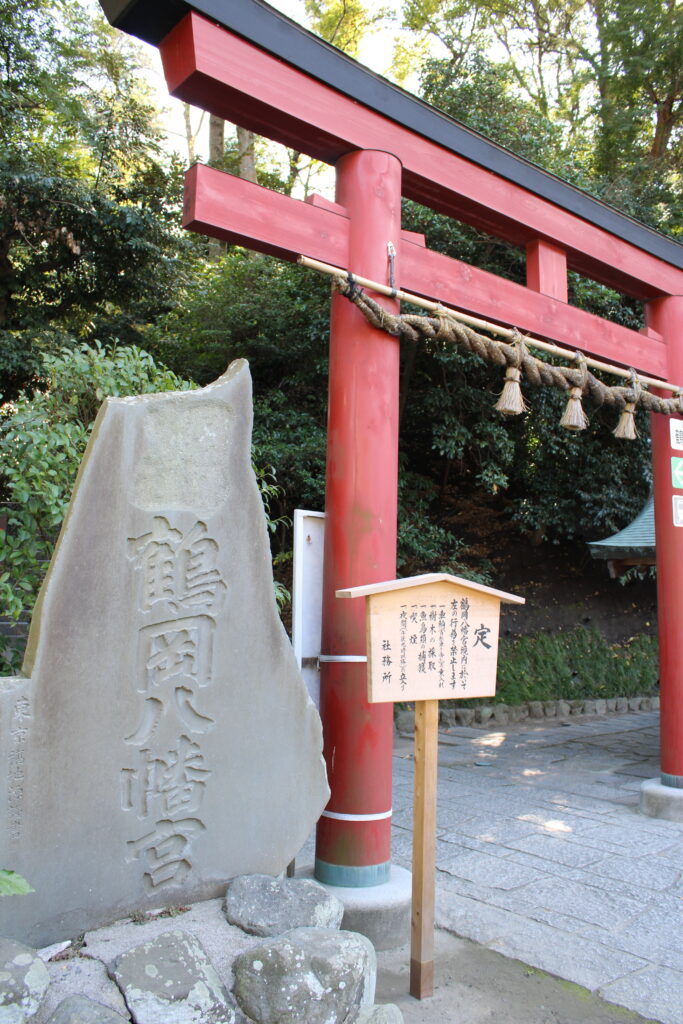
Maruyama Inari Shrine
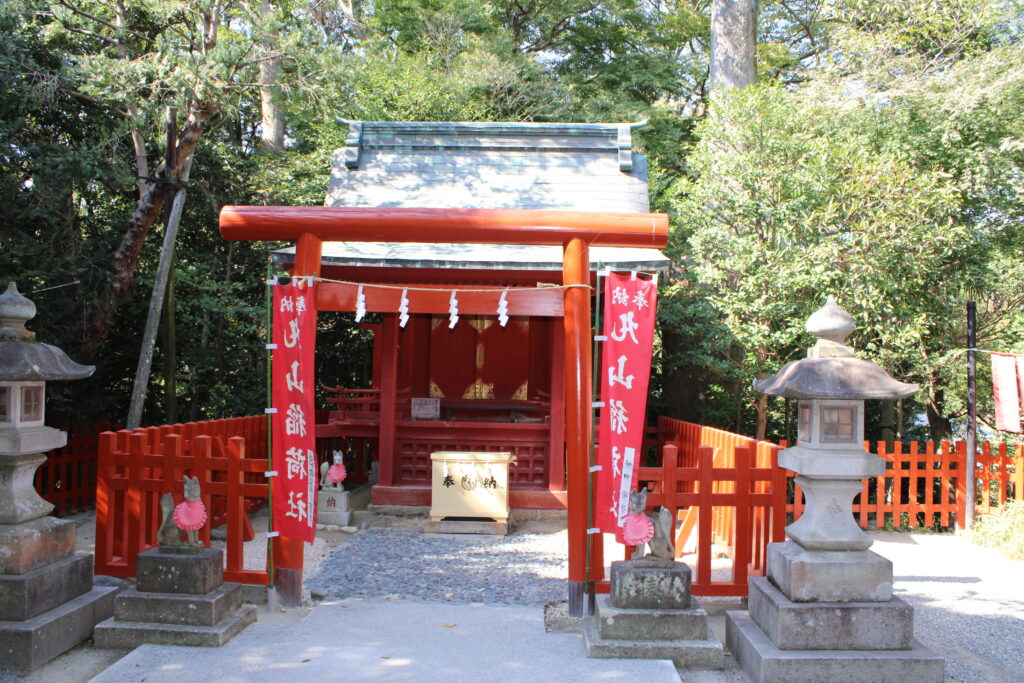
This is the oldest building from the Muromachi period within Tsurugaoka Hachimangu . It’s surrounded by red flags donated by many seeking prosperity in their businesses. Since my main job doesn’t seem to be thriving, I made a wish for my side jobs like blogging to prosper! There should definitely be some divine blessings coming my way♪

Main Shrine
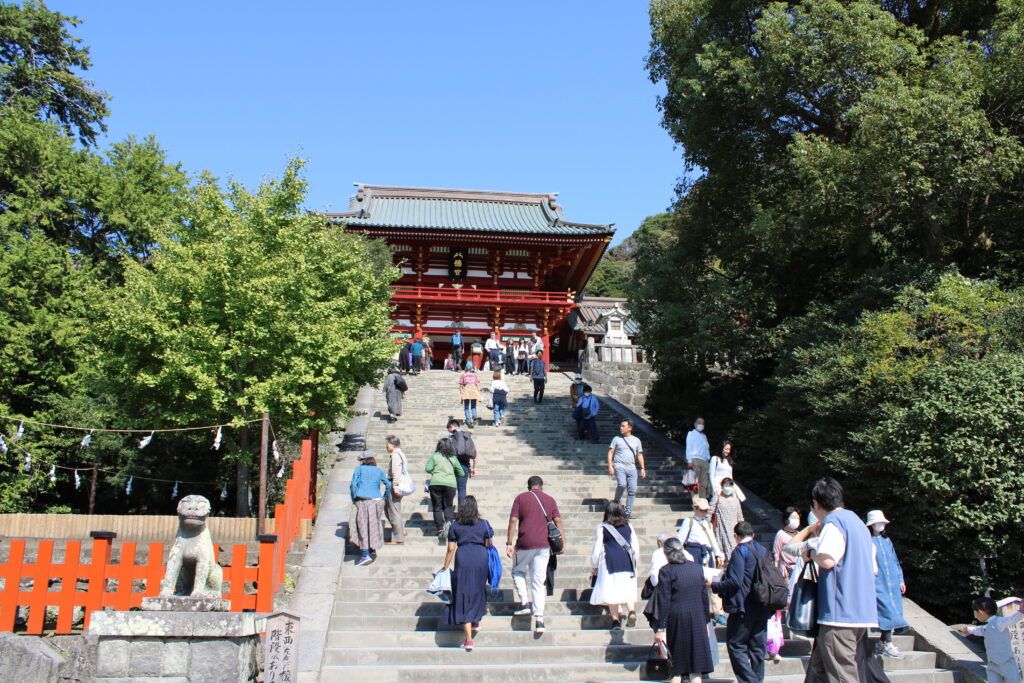
Here is the central shrine of Tsurugaoka Hachimangu. It enshrines Emperor Ojin, Empress Jingu, and Himegami. It’s designated as an Important Cultural Property of Japan.
On the Sakura Gate of the main shrine, you’ll find the characters for “Hachimangu” with the character “八” shaped like an animal. What animal could it be?
Actually, it’s a depiction of a dove! Doves have been beloved symbols of peace since ancient times. However, the dove used here carries a different meaning. According to legend, when Emperor Ojin pacified the country, he was guided by a dove, hence doves are also referred to as “emissaries of Hachiman-sama.” That’s why doves are used here.

By the way, did you know that the popular “Hato Sabure” (dove-shaped butter cookies) is also related to this? According to Toshimaya, the bakery that makes Hato Sabure, the founder, who deeply respected Tsurugaoka Hachimangu, had long wanted to create a snack associated with Hachiman-sama. Inspired by the character “八” on the main shrine’s plaque, which resembles a dove, and the doves in the shrine grounds loved by children, they shaped this snack like a dove and named it “Hato Sabure.”

Talking about this makes me crave some Hato Sabure now!
Sanetomo Cherry Blossom
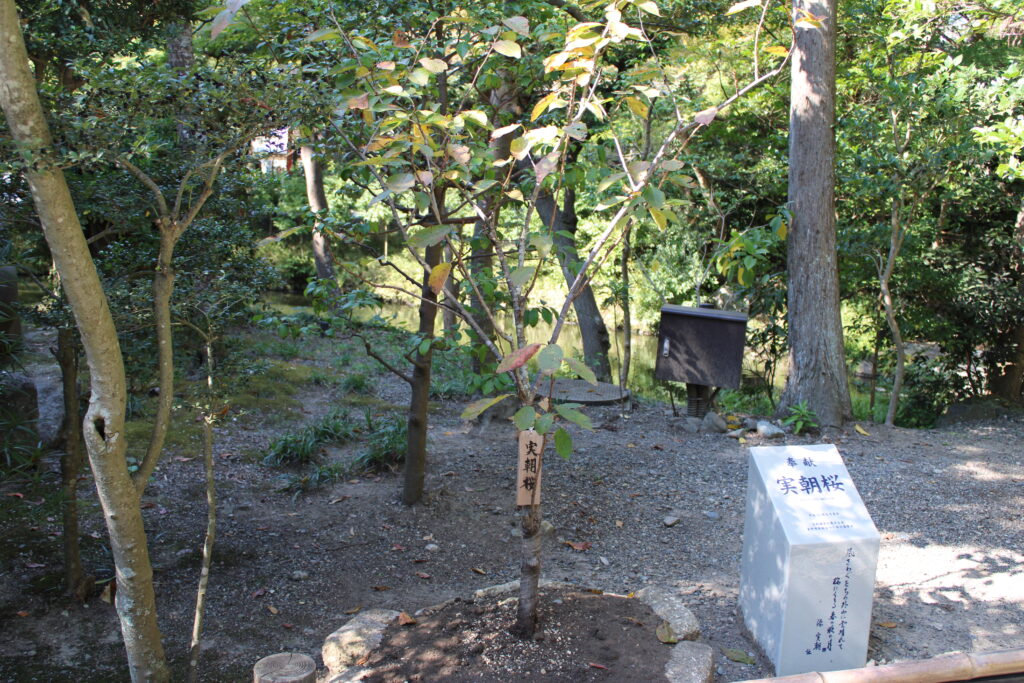
Now, there’s a small tree planted here named ” Sanetomo Cherry Blossom.”
Do you know of a person named Minamoto no Sanetomo? It might be difficult for overseas visitors, but he was the son of Minamoto no Yoritomo, who established the Kamakura Shogunate.

Although his older brother Yoriie became the second shogun, he was forced into retirement by their grandfather, Hōjō Tokimasa, and his younger brother Sanetomo became the third shogun of the Kamakura Shogunate. However, Sanetomo was assassinated by Yoriie’s son, Kugyo. Incidentally, Kugyo was also assassinated, thus ending the Minamoto line prematurely. The next shogun was chosen from the Fujiwara clan, who had blood ties with the Minamoto clan.
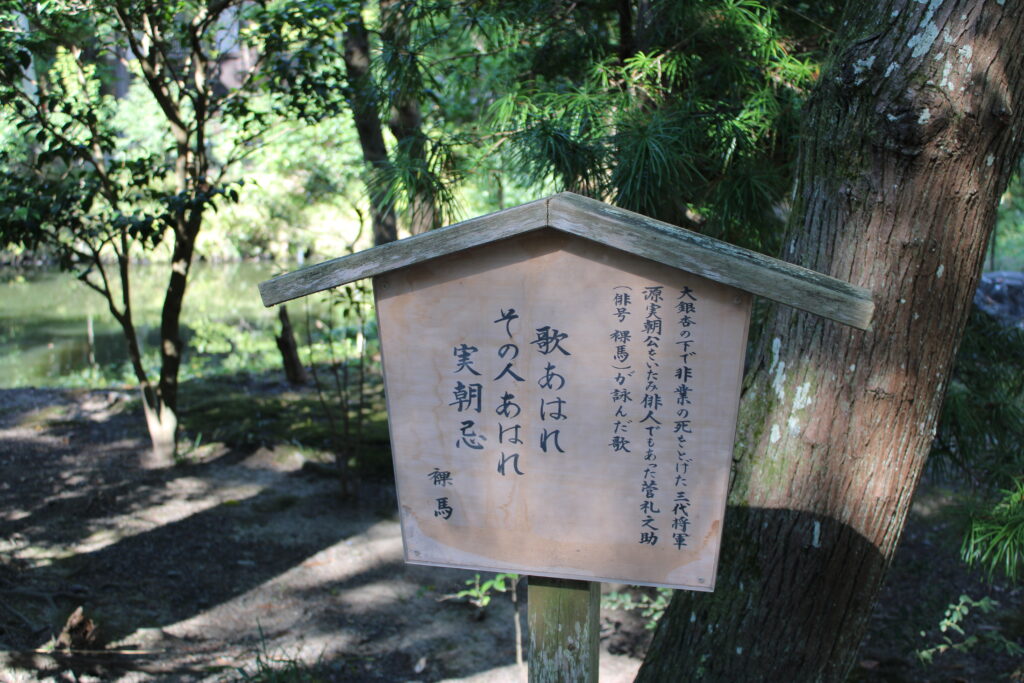
Additionally, Sanetomo was a talented poet, and his poems were included in the ” Kinkai Wakashu ” anthology and selected for the “Hyakunin Isshu” anthology. His poetry mentor was Fujiwara no Teika, known for compiling the “Shin Kokin Wakashū” anthology and selecting poems for the “Hyakunin Isshu.” By the way, Kamo no Chōmei, the author of the “Hōjōki,” also aimed to become Sanetomo’s mentor, but it seems that didn’t work out well.

Crane and Tortoise Stone
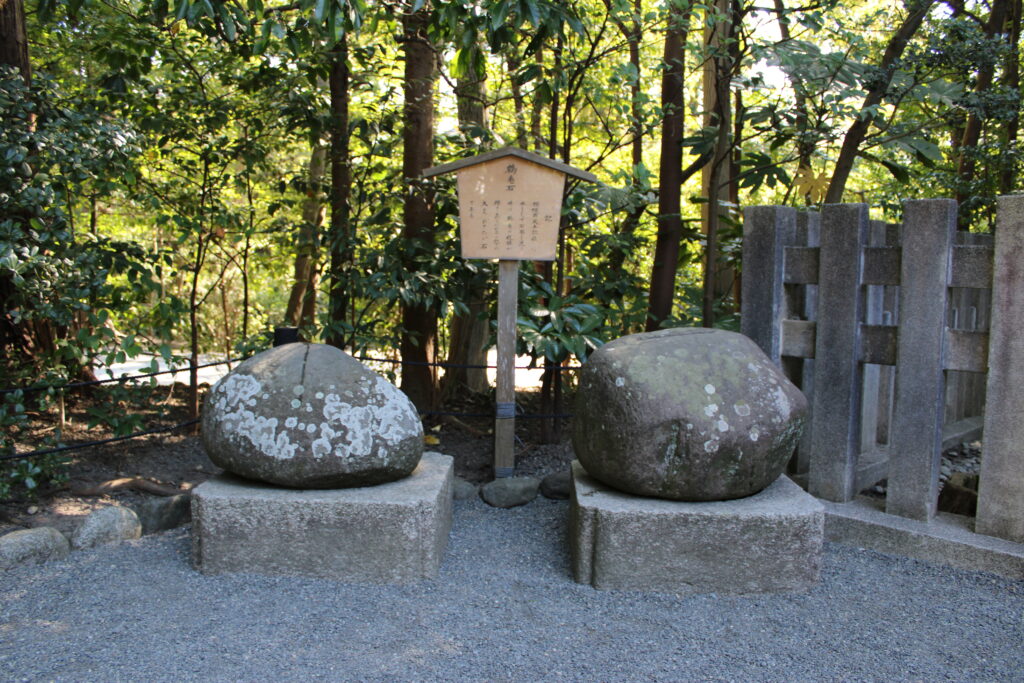
As the saying goes, “a crane lives a thousand years, a tortoise ten thousand,” cranes and tortoises have long been auspicious symbols of longevity in Japan. This belief originated not in Japan but is thought to have been transmitted from Chinese legends.
It’s said that if you wash these stones with water, the patterns of a crane and a tortoise will emerge. You might have thought, “Is that true!?” I felt the urge to try washing them with water. As a man in his forties , I resisted because I’m afraid of getting scolded here.
Genji Pond and Heike Pond
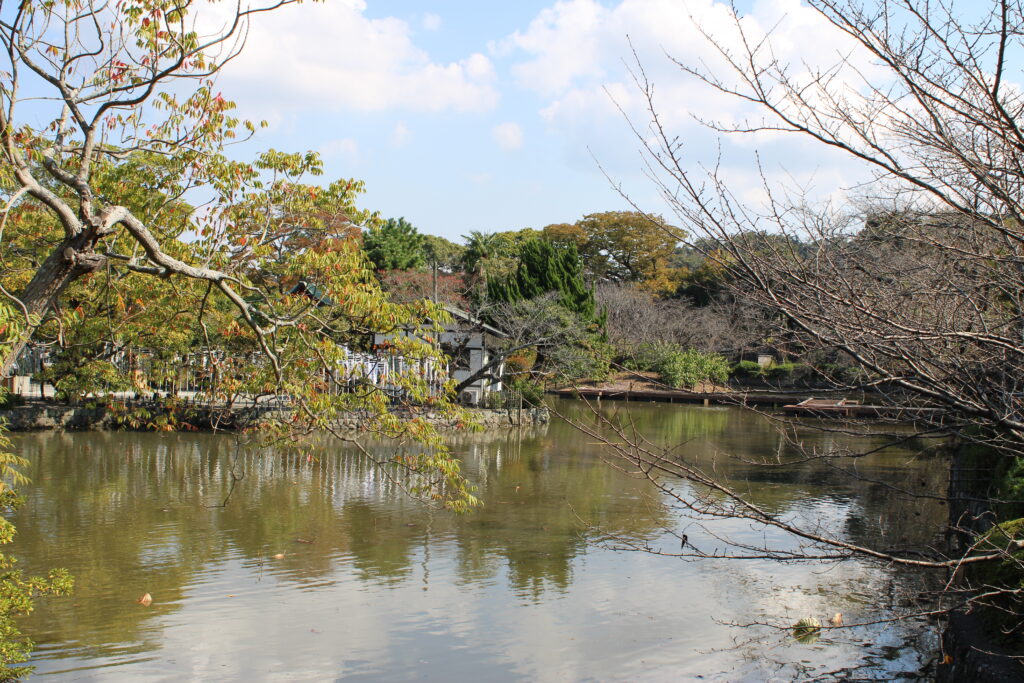
Finally, near the entrance from the Kamakura direction, you’ll find Genji Pond and Heike Pond. If you’re not aware, they might just seem like ordinary ponds. However, each pond actually holds significant meaning.
The Kamakura Shogunate was established by the Minamoto clan, overthrowing the Heike clan. This history is reflected in these ponds.
Genji Pond has three islands, symbolizing the number 3 which represents “birth” or “creation.” This signifies a wish for prosperity and growth associated with the Minamoto clan.
Heike Pond, on the other hand, has four islands, symbolizing the number 4 which traditionally signifies “death” or “destruction.” This reflects the downfall of the Heike clan.

Conclusion
Despite it being a weekday afternoon, I was struck by how crowded it was! As someone who’s not fond of crowds, this was a bit of a downside for me. However, by focusing on the history and taking a walk, I made various discoveries I hadn’t noticed before and had a delightful time.♪
In addition to history, you can also enjoy seasonal flowers and more at Tsurugaoka Hachimangu, so why not make a stop there when you visit Kamakura?




コメント